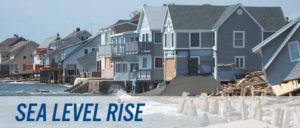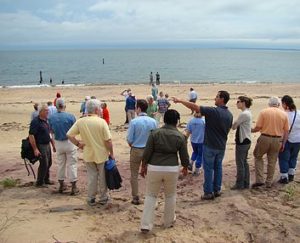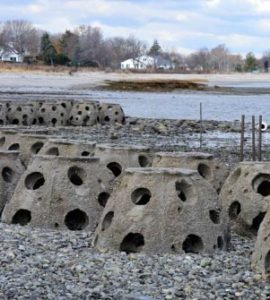Connecticut has been making tremendous progress developing a Restoration Economy in recent years, which greatly aiding both its economic and climate resilience efforts. Here are just three of the many active players.
The mission of Connecticut Fund for the Environment and its program, Save the Sound, is to protect and improve the land, air, and water of Connecticut and Long Island Sound. This tax-exempt organization uses legal and scientific expertise and bring people together to achieve results that benefit our environment for current and future generations.
Working in Connecticut and New York, Save the Sound has an established 40-year track record of restoring and protecting the waters and shorelines of the Sound. Their success is based on scientific knowledge, legal expertise, and thousands of ordinary people teaming up to do the little things that make a big difference. Since 2002, they’ve reopened 74 miles of rivers and 433 acres of lakes to fish passage, helping over a million fish reach their spawning grounds.
The freshwater and saltwater of our region are staples of life for Connecticut and New York residents. The great estuary of Long Island Sound extends across 1,320 square miles from New York City to Orient Point. An even greater areas drains into it: the Sound’s vast watershed includes 16,820 square miles of forests, towns, rivers, and lakes extending through New England up into Canada, as well as the bustling cities at its western end and the farms of eastern Long Island.
The vitality of these natural systems is essential to public health, economic security, ecosystem diversity, and recreational adventures. However, pollution, bacteria, and development threaten our region’s livelihood. Through advocacy, legislative and legal work, hands-on projects, and volunteer efforts, they work to ensure the health of our waters is constantly improving.
The mission of the Connecticut Office of Brownfield Remediation and Development is to return brownfield sites across the state to productive re-use, including mixed-use, residential, commercial, industrial, retail, and open space uses.
Redevelopment of brownfield properties can benefit communities in a variety of ways by removing blight, attracting private investment and new jobs to vacant or abandoned properties, and by remediating environmental contamination.
OBRD is a one-stop resource for Connecticut brownfield development. They provide financial and technical assistance to municipalities and economic development agencies as well as brownfield owners and potential developers.
 The mission of the Connecticut Institute for Resilience and Climate Adaptation (CIRCA) at the University of Connecticut is to increase the resilience and sustainability of vulnerable communities along Connecticut’s coast and inland waterways to the growing impacts of climate change on the natural, built, and human environment.
The mission of the Connecticut Institute for Resilience and Climate Adaptation (CIRCA) at the University of Connecticut is to increase the resilience and sustainability of vulnerable communities along Connecticut’s coast and inland waterways to the growing impacts of climate change on the natural, built, and human environment.
CIRCA is a multi‐disciplinary, center of excellence that brings together experts in the natural sciences, engineering, economics, political science, finance, and law to provide practical solutions to problems arising as a result of a changing climate. The Institute helps coastal and inland floodplain communities in Connecticut and throughout the Northeast better adapt to changes in climate and also make their human‐built infrastructure more resilient while protecting valuable ecosystems and the services they offer to human society (food, clean air and water, and energy).
The Institute combines the world‐class research capabilities of UConn and the progressive policies and practical regulatory experience of the Connecticut Department of Energy and Environmental Protection (CTDEEP) to translate sound scientific research to actions that can ensure the resilience and sustainability of both the built and natural environments of the coast and watersheds of Connecticut.
While Connecticut and the Northeast are particularly susceptible to the impacts of climate change and associated severe weather events, the problem exists at the national and international scales, with droughts and flooding worldwide. Severe storms in the United States cause 110 deaths per year in flood-related accidents and an average of $3.8 billion annually in property damage. In addition to floods, droughts, pollution of water resources and coastal areas, ocean currents and severe weather (ice/snow/hail storms, hurricanes, etc.) are the most costly and deadly of all natural disasters. Climate change affects the water cycle increasing the frequency of abnormal weather, including heavy rains and droughts, around the world with particularly severe impacts in developing countries. While its immediate attention will be in Connecticut and the Northeast, the Institute is developing comprehensive approaches to climate change research and its impacts at the national and international scales.
Note from Storm: My thanks to Connecticut State Representative James Albis for his help with this article.
See Connecticut Fund for the Environment website & photo credit.
See CT Office of Brownfield Remediation and Development success stories & image credit.




